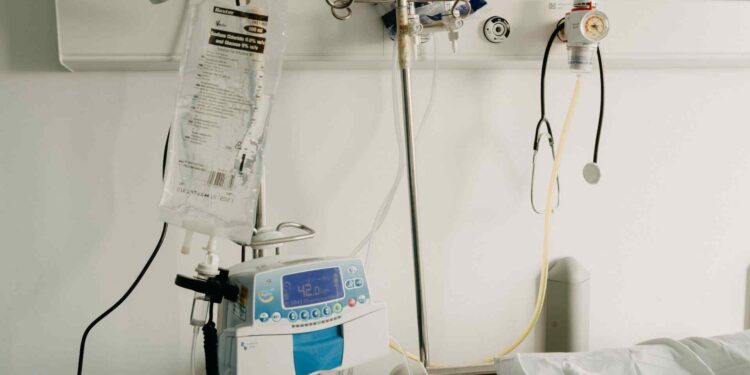Dehydration is a common medical condition that can range from mild to severe, affecting people of all ages. Whether caused by illness, strenuous exercise, or environmental factors, dehydration occurs when the body loses more fluids than it takes in. One of the most effective treatments for moderate to severe dehydration is the administration of intravenous (IV) fluids. In many clinical settings, you might hear that IV fluids can work in as little as 15 minutes, or sometimes up to 90 minutes, to help rehydrate a patient. This article explores the nuances behind this timeframe, discussing the science of dehydration, the types of IV fluids used, and the factors that influence how quickly rehydration can occur.
Understanding Dehydration
Dehydration happens when the body loses water and essential electrolytes faster than it can replace them. The severity of dehydration can vary:
- Mild dehydration may result in thirst, dry mouth, and slight fatigue.
- Moderate dehydration could lead to dizziness, decreased urine output, and rapid heartbeat.
- Severe dehydration is a medical emergency that might include confusion, extreme weakness, and very low blood pressure.
In cases where dehydration is significant, oral rehydration might not be sufficient, particularly if nausea, vomiting, or an inability to drink adequate fluids is present. This is where IV fluids come into play, offering a rapid and controlled way to replenish the body’s hydration and electrolyte balance.
What Are IV Fluids?
IV fluids are solutions administered directly into the bloodstream through a vein. These fluids are specifically formulated to contain a precise mixture of water, electrolytes (such as sodium, potassium, and chloride), and sometimes dextrose (a form of sugar). Their composition is designed to mimic the body’s natural fluids, helping to restore balance quickly and effectively.
There are several types of IV fluids, each used based on the specific needs of the patient:
- Normal Saline (0.9% Sodium Chloride): Often the first choice for rehydration, it is isotonic, meaning its concentration is similar to that of the blood.
- Lactated Ringer’s Solution: Contains a balanced mixture of electrolytes and is frequently used in cases of trauma or surgery.
- Dextrose Solutions: Used when the patient also requires an energy source in addition to fluids.
Each solution is selected based on the type of dehydration, the patient’s medical history, and the clinical judgment of the healthcare provider.
The 15–90 Minute Timeframe Explained
When addressing the question, “How long do IV fluids take for dehydration?” the answer often quoted is between 15 and 90 minutes. This range, however, is influenced by several factors:
- Severity of Dehydration:
In mild to moderate dehydration, a patient might experience noticeable improvement within as little as 15–30 minutes after starting the IV infusion. The body quickly absorbs the fluids, and the restoration of electrolyte balance can rapidly alleviate symptoms. For more severe dehydration, however, the process might extend toward the 90-minute mark or even longer, as more fluid is needed to correct imbalances safely. - Patient-Specific Factors:
- Age: Children and the elderly may have different physiological responses to IV fluids. Younger patients might stabilize quicker, whereas older adults or infants might require more careful monitoring and slower rates of infusion.
- Underlying Health Conditions: Conditions such as kidney disease, heart failure, or diabetes can affect how quickly a patient can be rehydrated. In such cases, the fluid administration may be adjusted to prevent complications such as fluid overload.
- Body Weight and Composition: A larger body mass may require more fluids to achieve the desired effect, potentially extending the rehydration process.
- Type and Volume of Fluid Administered:
The specific IV fluid used, as well as the volume administered, plays a crucial role in how quickly hydration is achieved. A bolus, or rapid infusion, of a fluid like normal saline can restore fluid balance in a relatively short period (15–30 minutes) in many cases. In contrast, more gradual rehydration protocols may be used for patients with complex medical conditions, stretching the process closer to 90 minutes. - Infusion Rate and Technique:
Modern IV therapy allows healthcare providers to control the infusion rate precisely. In emergency situations, rapid infusions are common, and fluids are delivered at a high rate to quickly restore blood volume and improve circulation. However, if the patient is at risk of complications such as pulmonary edema (fluid in the lungs), a slower rate may be chosen to ensure safety while still providing effective rehydration. - Clinical Setting:
The environment in which the IV is administered—whether in an emergency room, intensive care unit, or outpatient clinic—can also impact the timeframe. In acute care settings, the focus is often on rapid stabilization, so clinicians may opt for a faster infusion rate, keeping the process within the shorter end of the 15–90 minute spectrum. In more controlled settings, where the risk of complications is minimized, a slower infusion may be deemed safer.
The Science Behind IV Rehydration
When IV fluids are administered, the water and electrolytes contained within the solution quickly enter the bloodstream. This rapid infusion increases the blood volume, which in turn improves blood pressure and enhances the delivery of oxygen and nutrients to tissues. The electrolytes help to balance the electrical charges in cells, which is vital for proper nerve and muscle function.
During rehydration:
- Intravenous fluids circulate rapidly: Within minutes of infusion, fluids begin to move through the vascular system, reaching vital organs.
- Cellular rehydration: As the body’s extracellular fluid levels are replenished, water gradually moves into cells through osmosis, balancing the concentration gradients between the inside and outside of cells.
- Restoration of function: Once adequate hydration is achieved, symptoms such as dizziness, fatigue, and rapid heartbeat typically begin to subside.
Because these processes occur at different rates depending on individual physiology and the severity of dehydration, the overall time to complete effective rehydration can vary widely, hence the 15–90 minute range.
Clinical Protocols and Safety Considerations
The administration of IV fluids is a common yet critical procedure in medical practice. Clinicians follow well-established protocols to ensure that rehydration is both effective and safe. Some of the key considerations include:
- Monitoring Vital Signs: Before, during, and after IV fluid administration, patients are closely monitored. Blood pressure, heart rate, and oxygen saturation are regularly checked to ensure that the patient is responding well.
- Adjustment of Fluid Type and Rate: Depending on the patient’s response and any underlying conditions, the type of fluid or the rate of administration may be adjusted. This flexibility is essential in avoiding complications such as fluid overload.
- Observation for Adverse Reactions: While IV fluids are generally safe, some patients may experience reactions, such as swelling at the infusion site, allergic reactions, or electrolyte imbalances. Immediate action can be taken if any adverse symptoms are noted.
- Tailoring Treatment to Individual Needs: Not all patients are the same, and treatment protocols are individualized. A patient with mild dehydration might receive a rapid infusion of 500 mL of normal saline, while a severely dehydrated patient might require a slower, more controlled infusion of a larger volume.
These safety protocols are why healthcare providers can confidently state that IV fluids will generally take between 15 and 90 minutes to start showing significant benefits, with the exact time tailored to the patient’s condition and needs.
Real-World Perspectives: IV Fluids in Action
In many clinical scenarios, the administration of IV fluids is a routine procedure that saves lives. Emergency departments, urgent care centers, and hospital wards regularly use IV rehydration as a first-line treatment for dehydration. The effectiveness of this treatment is well-documented:
- Emergency Situations: In cases of severe dehydration caused by acute illnesses such as gastroenteritis or heat stroke, IV fluids are a critical intervention. Rapid administration can quickly restore circulatory volume and prevent organ damage.
- Chronic Conditions: For patients with chronic illnesses that predispose them to dehydration—such as those undergoing chemotherapy or suffering from diabetes—regular IV rehydration can be part of an ongoing treatment plan.
- Sports and Exercise: Athletes who experience dehydration during intense physical activity may sometimes receive IV fluids to help recover more quickly, though this is generally reserved for extreme cases.
Patients and healthcare providers alike recognize that while the response to IV fluids can be remarkably fast in some cases, individual differences mean that a one-size-fits-all timeframe is impossible. The range of 15 to 90 minutes represents a general guideline that covers the vast majority of clinical scenarios.
Research and Evidence on IV Fluid Administration
Numerous studies have evaluated the efficacy of IV fluid therapy in treating dehydration. Clinical research consistently demonstrates that, when administered appropriately, IV fluids rapidly restore blood volume and improve patient outcomes. Key findings from the literature include:
- Rapid Hemodynamic Improvement: Many studies indicate that patients often exhibit improved blood pressure and heart rate within 15–30 minutes of starting an IV fluid infusion. This rapid response is crucial in stabilizing patients who are in shock or experiencing severe dehydration.
- Electrolyte Rebalancing: Beyond simply restoring fluid volume, IV fluids help correct electrolyte imbalances. Studies show that this rebalancing occurs relatively quickly, contributing to overall recovery within the 15–90 minute window.
- Tailored Therapy Benefits: Research underscores the importance of personalized IV fluid protocols, noting that adjustments based on patient-specific factors lead to better outcomes and fewer complications.
While the exact numbers can vary based on methodology and patient demographics, the consensus supports the clinical guideline of a 15–90 minute administration period as a safe and effective window for most patients.
Conclusion:
The administration of IV fluids is an essential intervention in the management of dehydration. With the ability to restore blood volume, reestablish electrolyte balance, and alleviate the symptoms of dehydration, IV therapy is a cornerstone of emergency and routine medical care. The commonly cited timeframe—15 to 90 minutes—reflects the diversity of clinical scenarios and patient needs. In mild cases, rapid improvement can often be observed in as little as 15 minutes, while more severe cases may require a more gradual infusion lasting up to 90 minutes or longer.
Several key factors influence this range: the severity of dehydration, the type and volume of fluids used, patient-specific variables, and the clinical setting. Health professionals carefully monitor patients throughout the process, adjusting the treatment as needed to ensure both efficacy and safety.
Ultimately, while the 15–90 minute window is a useful general guideline, the exact duration of IV fluid therapy will always be determined by the individual circumstances of each case. For anyone undergoing treatment for dehydration, this tailored approach ensures that the rehydration process is both rapid and safely managed, paving the way for a quicker recovery and a return to well-being.
In summary, IV fluids typically take between 15 and 90 minutes to start reversing the effects of dehydration. This timeframe is supported by both clinical experience and research, underscoring the importance of individualized care in achieving the best outcomes. Whether in an emergency room, a hospital ward, or an outpatient setting, this critical intervention remains one of the most effective tools in combating dehydration and restoring health.










Discussion about this post